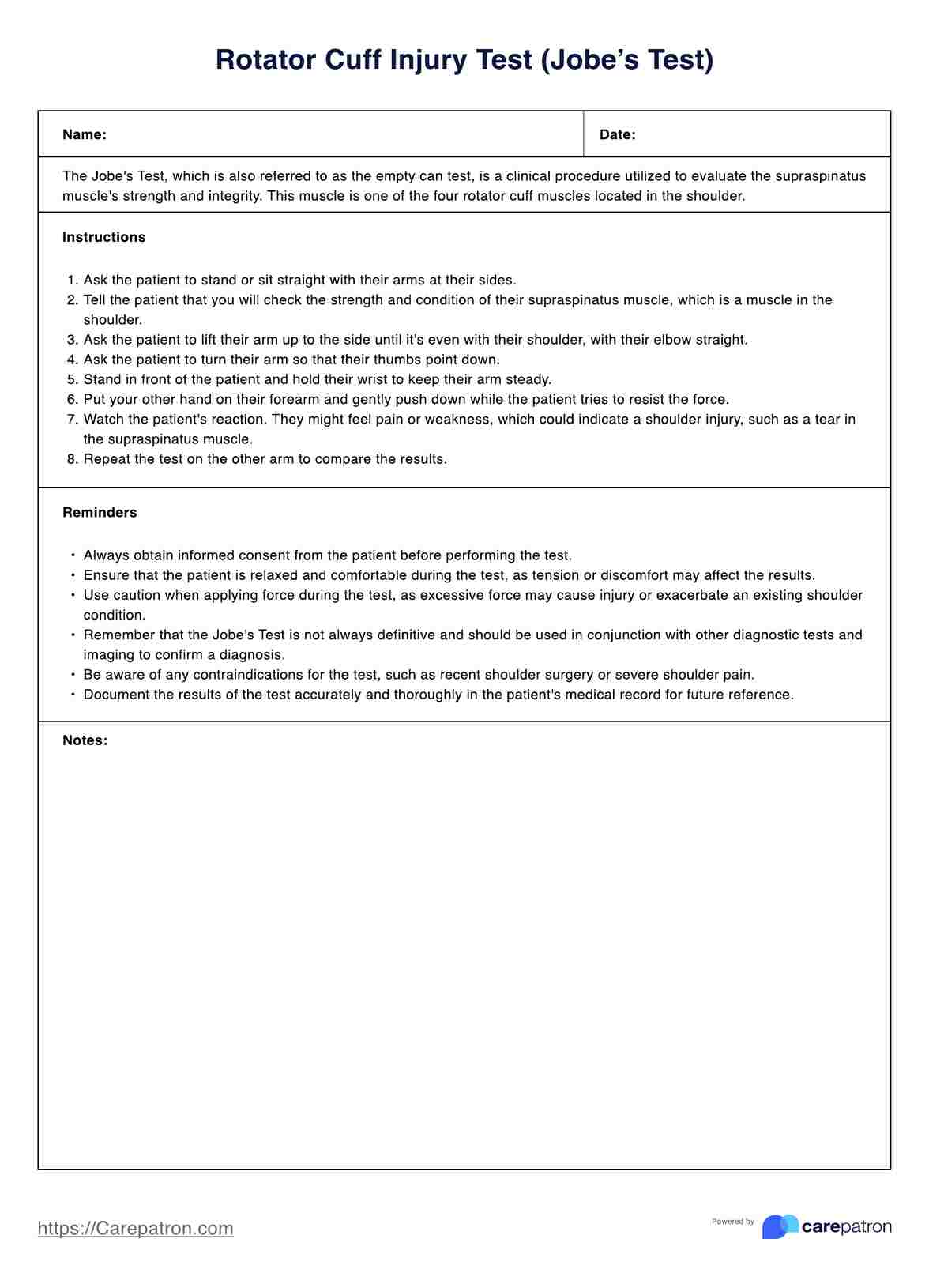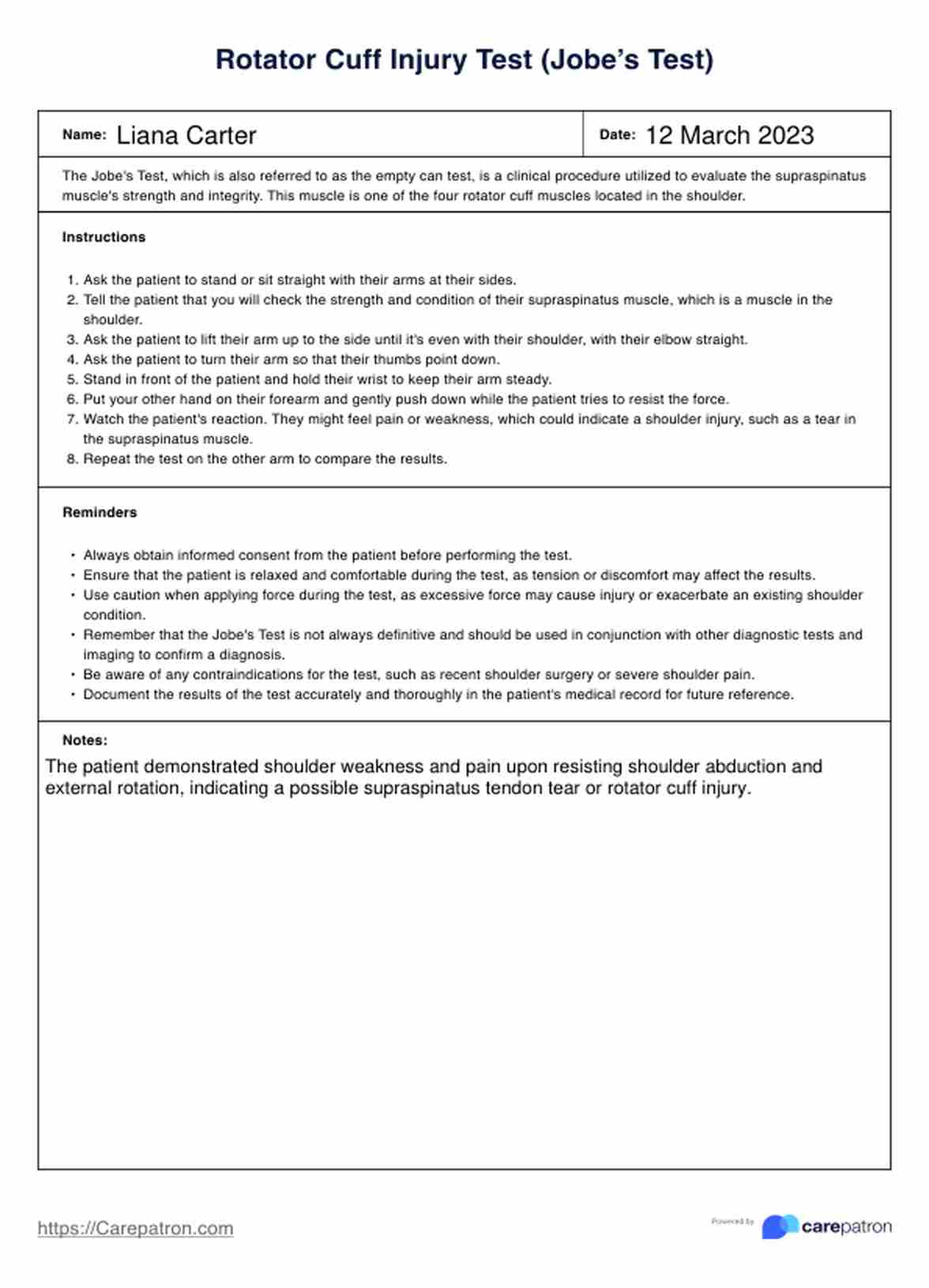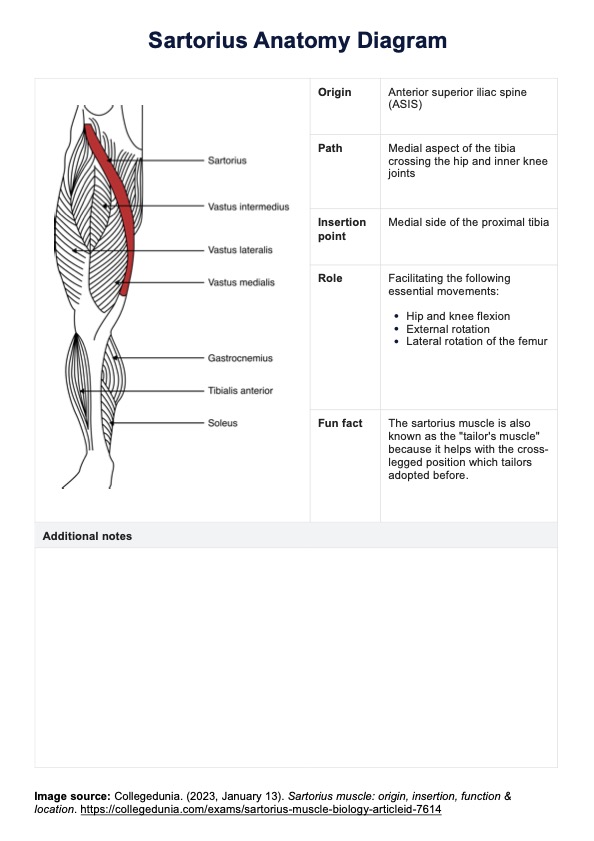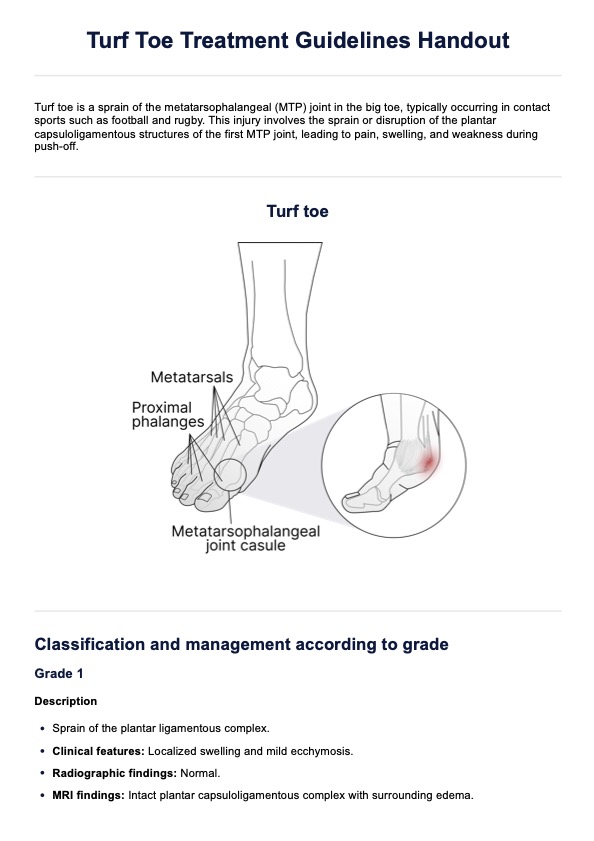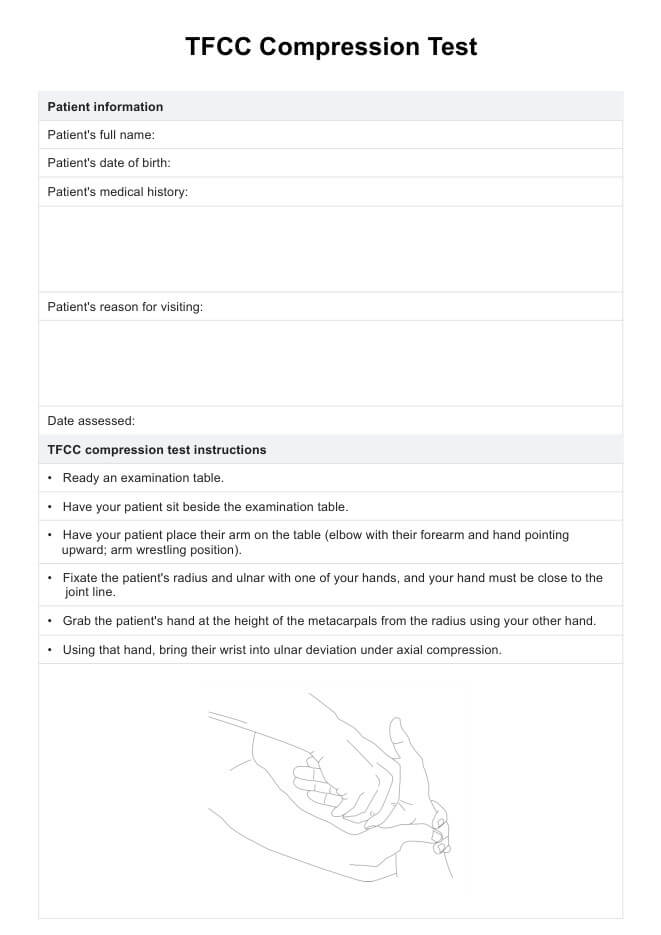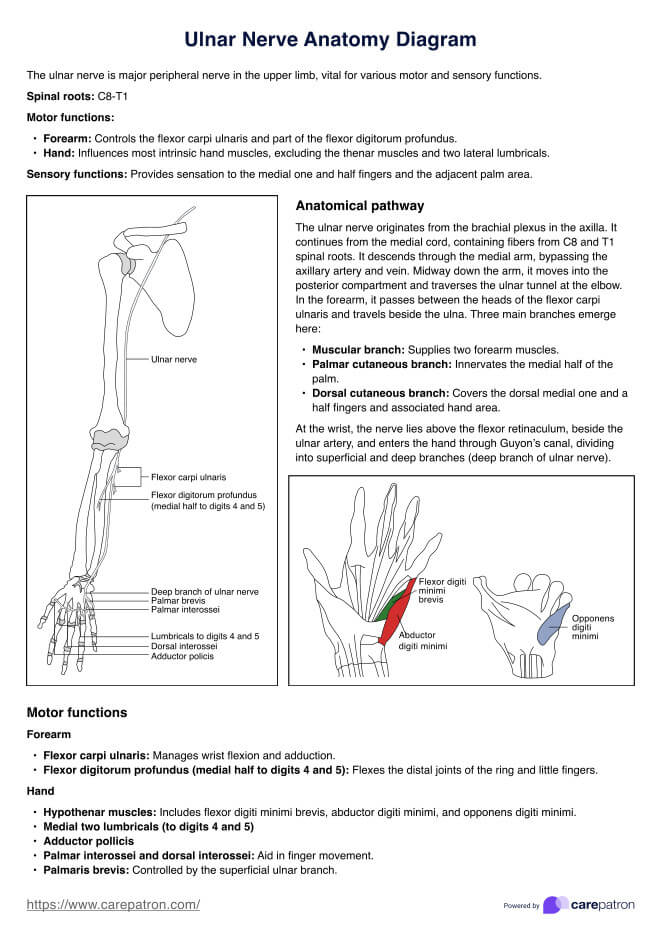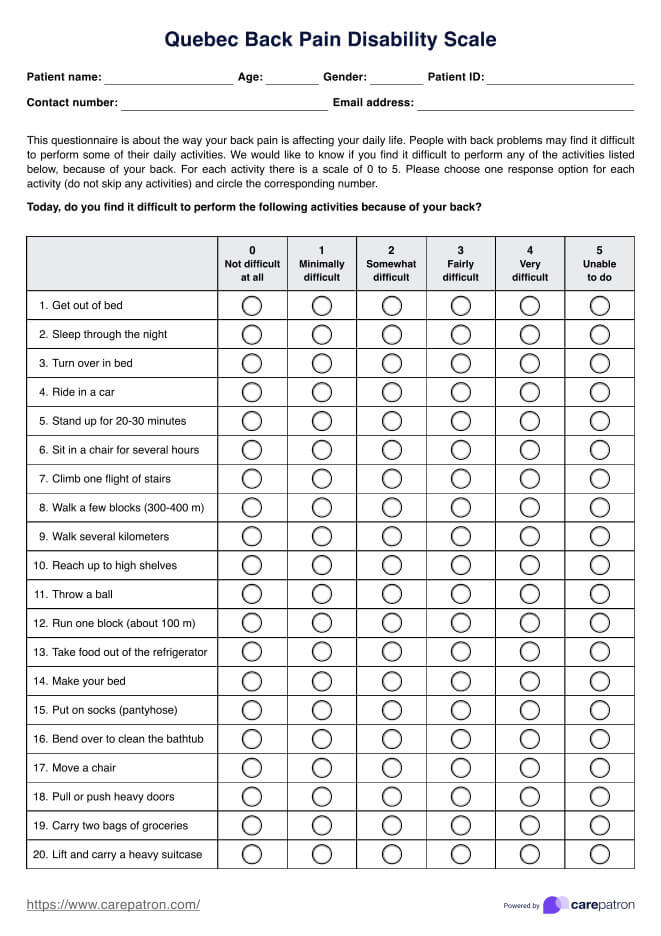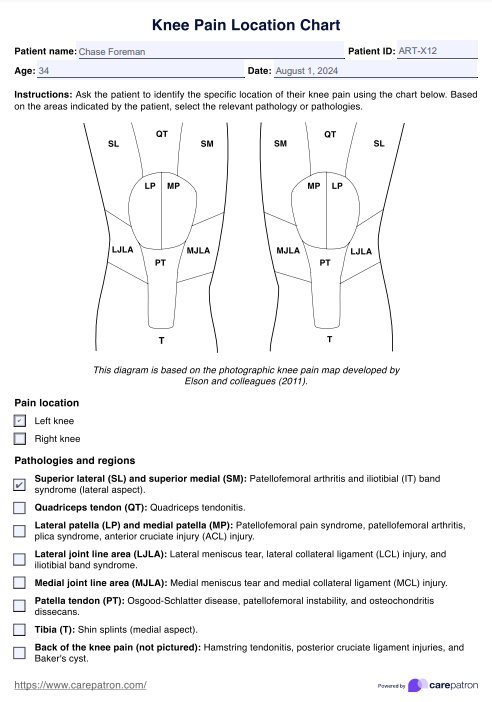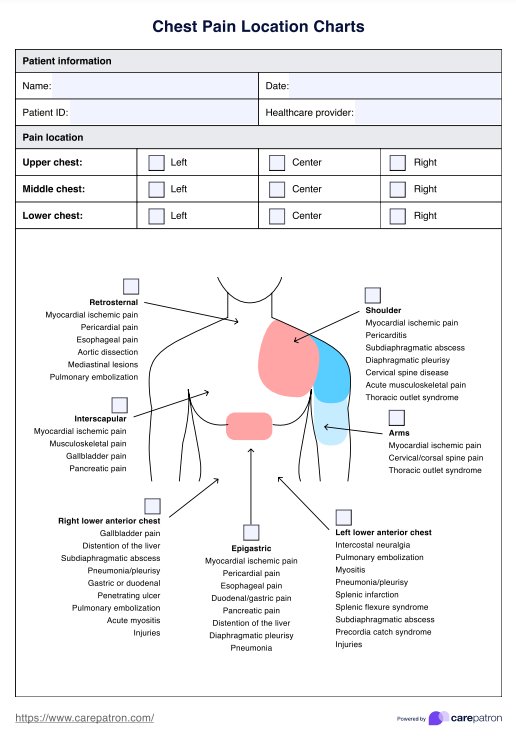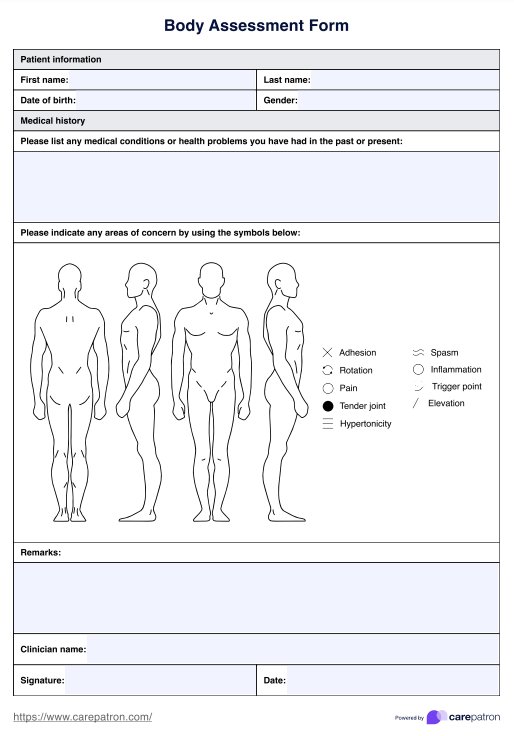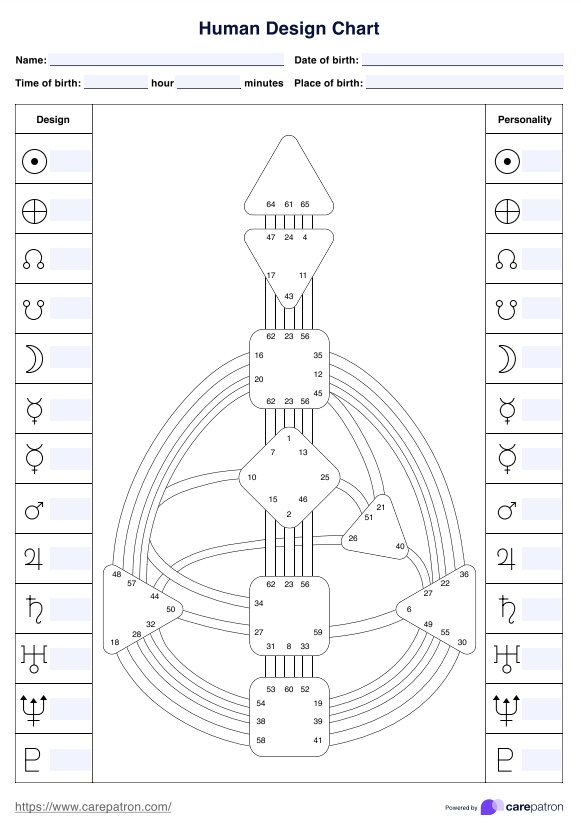Rotator Cuff Injury Test (Jobe's Test)
Wondering how to assess a rotator cuff injury? Learn more about the Jobe's Test, a rotator cuff injury test, and how to complete it with our free PDF guide.


What is a Rotator Cuff Injury Test?
The rotator cuff is a group of four muscles and tendons that provide stability to the shoulder joint. It is made up of the supraspinatus, infraspinatus, teres minor, and subscapularis muscles. These muscles help rotate and raise the arm and stabilize it in its socket.
Any injury to the rotator cuff can cause pain, weakness, and limited movement in the shoulder joint. Common causes of rotator cuff injuries include repetitive overhead motions such as throwing a baseball, lifting heavy weights, or using a computer mouse for long periods. Other possible causes are falls on an outstretched arm or age-related degeneration of the muscles or tendons.
A doctor may perform a as part of an examination to diagnose any potential issues. One of the most common tests is the Jobe's Test, which helps identify any tears or impingement of the rotator cuff.
Rotator Cuff Injury Test (Jobe's Test) Template
Rotator Cuff Injury Test (Jobe's Test) Example
How does this Rotator Cuff Injury Test work?
The Jobe's Test is a clinical test that puts a patient's shoulder through specific movements to assess for any issues. To use this free template, follow these simple steps:
Step One: Download the template
Get a copy of the Rotator Cuff Injury Test using the link on this page. You can also download it from the Carepatron app or our resources library.
Step Two: Explain the test to your patient
Explain to your patient that you will monitor for pain or discomfort as they perform the test. Ensure that the test is safe and should not cause further injury.
Step Three: Execute the test
Have the patient stand and raise their arm to 90°. Slowly lower their arm, keeping it straight until there is a slight stretch in the shoulder area. At this point, ask the patient if they feel any pain or discomfort. If so, stop the test and record your findings.
Step Four: Record your findings
The results of the Rotator Cuff Injury Test will help you diagnose any potential issues with the shoulder. Make sure to record your findings and discuss them with the patient.
Rotator Cuff Injury Test Interpretation
Similar to the Drop Wall Test, this assessment tool helps identify any tears or impingement of the rotator cuff. Pain during the test can indicate an issue with the shoulder joint, such as a tear or impingement. If no pain is present, the test might be inconclusive, and further tests may need to be done to diagnose any potential issues.
As a clinician, taking the time to perform the Rotator Cuff Injury Test and adequately assess any potential issues with the shoulder is essential. A patient's quality of life can improve by correctly diagnosing and treating a rotator cuff injury.
Note that this test is only meant to provide an initial diagnosis and should NOT be used as a replacement for a complete diagnosis. If you suspect your patient has a rotator cuff injury, it's best to conduct a complete shoulder exam and refer them for further evaluation.
When to use these Rotator Cuff Tear tests?
The Rotator Cuff Injury Test should be used whenever a patient presents with shoulder pain or decreased range of motion. It is an easy and effective way to check for any tears or impingements in the rotator cuff muscles. You can also use this tool if or when:
Your patient reports pain while performing everyday activities
By administering the Jobe's Test, you can help determine if the pain is due to age-related degeneration of the muscles or tendons, a torn rotator cuff, or another issue.
Your patient has a history of shoulder injury or instability
The Rotator Cuff Injury Test is a great way to assess potential shoulder joint issues and check for further damage.
Your patient shows signs of weakness or instability in their shoulder
Testing the strength and stability of the shoulder muscles can be a good indicator of any underlying issues with the rotator cuff. The Rotator Cuff Injury Test can help determine any potential tears or impingements that could be causing the weakness or instability.
You want to assess the severity of a rotator cuff injury
Once you have diagnosed a rotator cuff injury, the Rotator Cuff Injury Test can be used to assess the severity of the injury. By tracking how the patient responds to the test over time, you can better understand the extent of their injury.
You want to compare results from before and after any treatments
By administering the Rotator Cuff Injury Test before and after any treatments, you can compare the results to see your treatment plan's effectiveness. This can help determine the next steps in their treatment plan and to track any improvements or further issues over time.
Who is this Rotator Cuff Injury Test PDF for?
This Rotator Cuff Injury Test PDF is for any healthcare professional looking to assess the shoulder joint for any tears or impingements. Specifically, this can be a handy tool for:
- Physiotherapists
- Physical therapists
- Chiropractors
- Athletic trainers
- Sports medicine specialists
- Occupational therapists
- Primary care physicians
- Orthopedic surgeons
This assessment can also be used in different settings, such as in the clinic, at home, or even on the field.
.png)
Benefits of free Rotator Cuff Injury Test Template
This free Rotator Cuff Injury Test Template offers numerous benefits. Some of these advantages are the following:
It's a handy tool for assessing shoulder pain
The Rotator Cuff Injury Test offers an easy way to assess the shoulder joint for any tears or impingements. This can help you diagnose the source of shoulder pain and determine your patient's treatment plan.
It's easy to use
This template contains easy-to-understand instructions so you can administer the test quickly and accurately.
It's fully digital
You don't need to waste paper printing the assessment using this template. You can save it as a PDF and keep it on your computer for easy reference.
It helps track progress over time
By performing this test, you can monitor the progression of your patient's injury over time. This can help you assess the effectiveness of your treatment plan and adjust it accordingly.
It helps patients understand their shoulder injury
By administering this test, your patient can better understand their shoulder injury and any associated treatments. This can help them stay informed and motivated throughout their recovery.
Commonly asked questions
Explain the test to your patient and set expectations for the outcome. Then, conduct the Jobe's Test by slowly and steadily raising the patient's arm against resistance with their palms facing the floor. Make sure to monitor your patient’s response while you are conducting the test. Once you have finished the assessment, check for any further damage or instability in the shoulder joint.
Interpret the Rotator Cuff Injury Test by noting any pain or weakness in the shoulder joint. If your patient experiences any instability, this could indicate a rotator cuff tear or impingement.
The Rotator Cuff Injury Test offers numerous benefits. It can help healthcare professionals easily assess the shoulder joint for any tears or impingements. It can also help track progress over time, and it helps patients better understand their shoulder injury and associated treatments.


